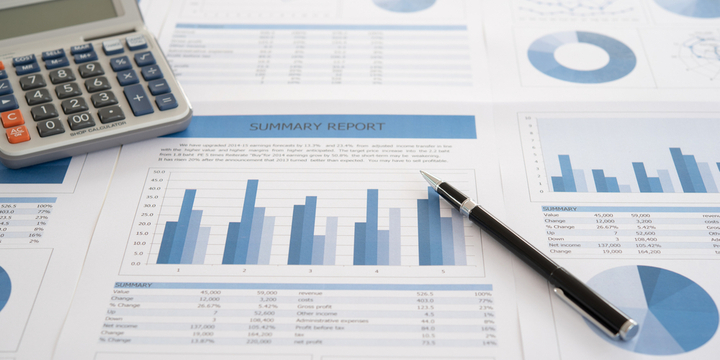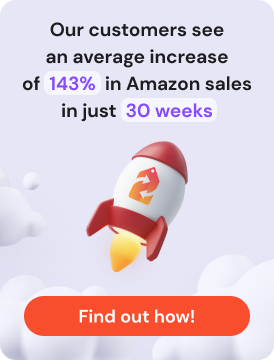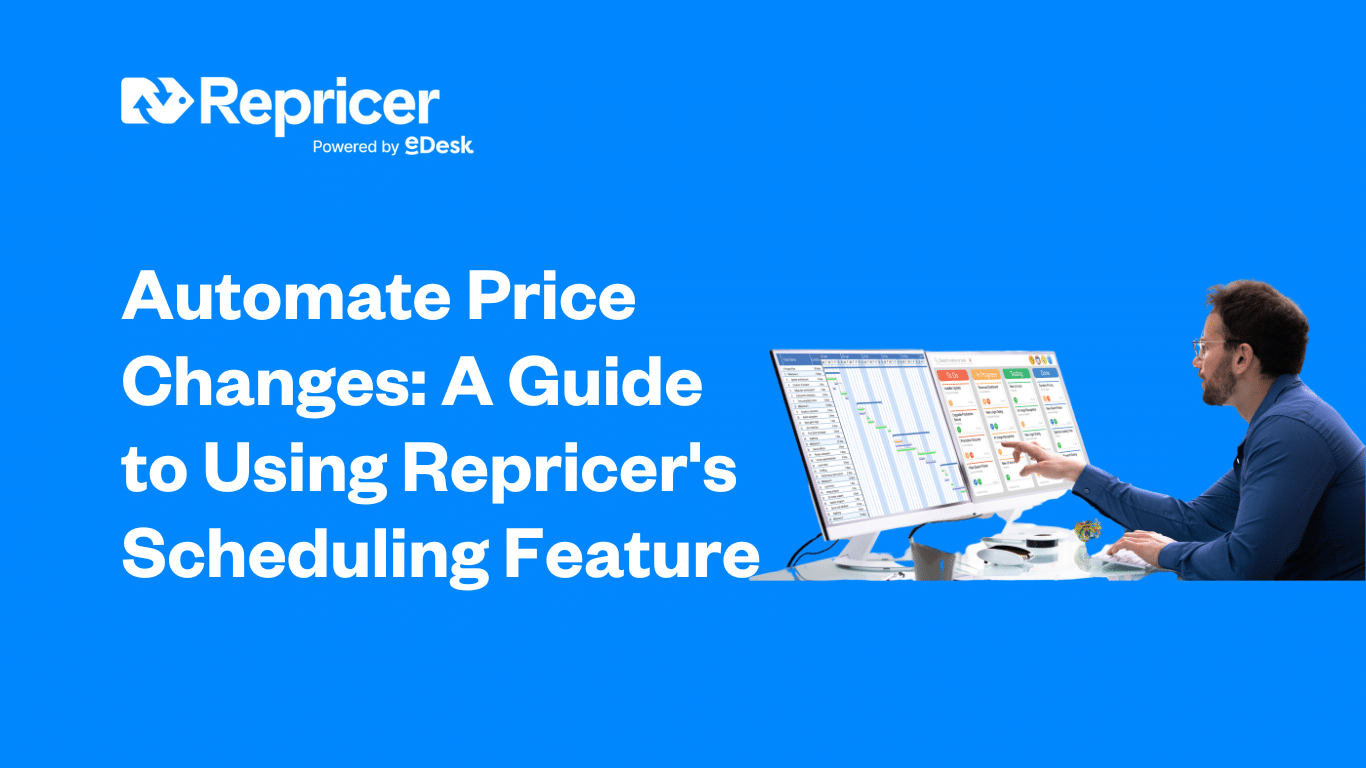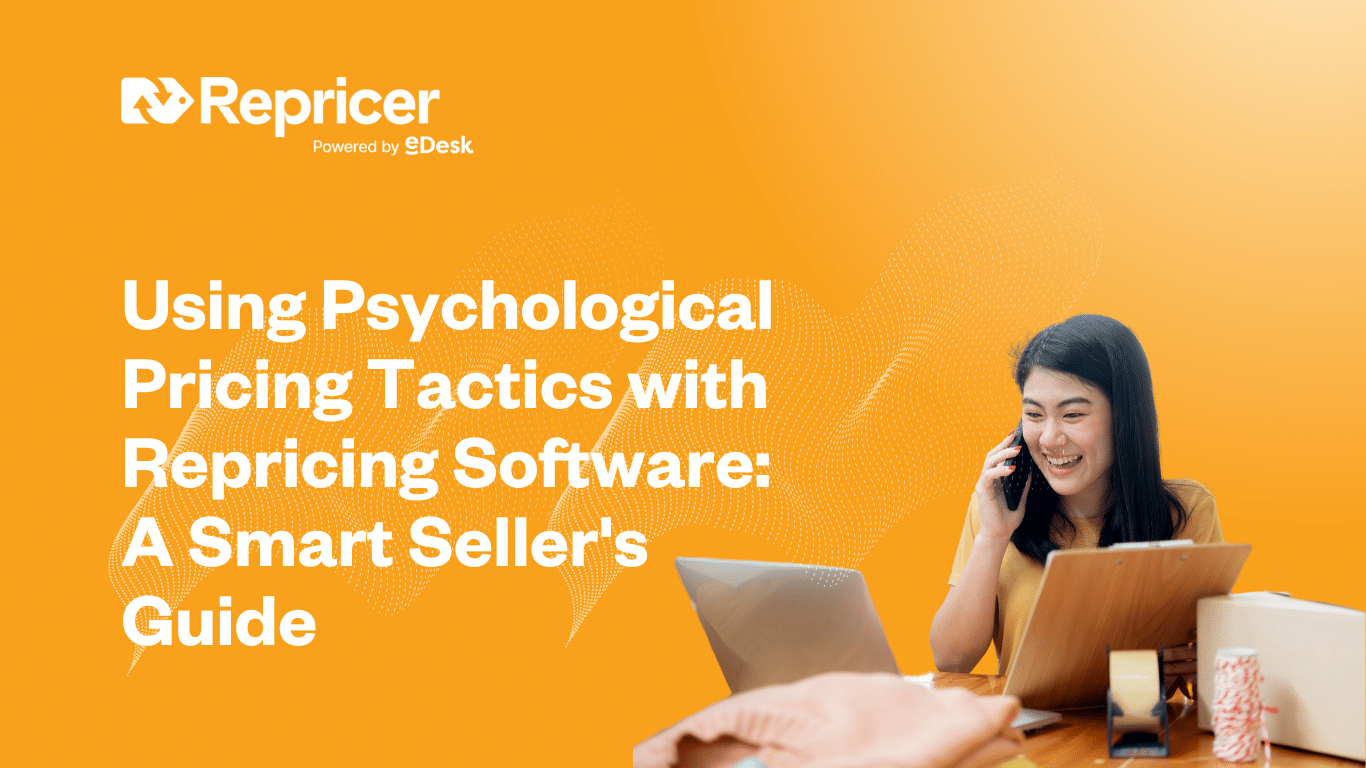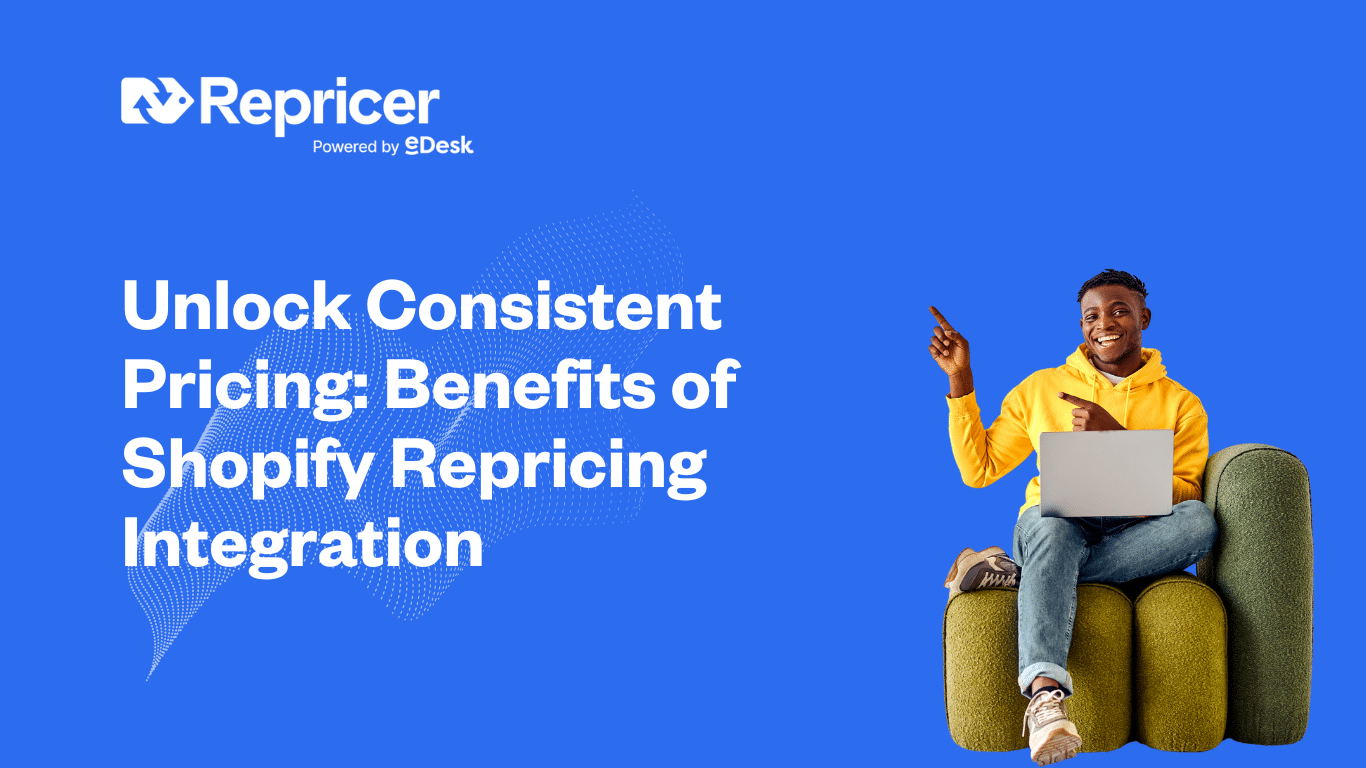Sono successe molte cose per e con Amazon da quando Jeff Bezos ha avviato l “attività nel suo garage nel 1994, con il primo ordine (un libro) arrivato l” anno successivo. Da allora, Amazon è cresciuta fino a diventare una delle aziende più grandi, ricche e diffuse. Per aiutarti a migliorare come venditore, Repricer.com ti propone le principali statistiche Amazon del 2025 a cui devi prestare la massima attenzione.
1. Amazon detiene una quota enorme del mercato dell’e-commerce statunitense
Nel 2024, le vendite di Amazon rappresenteranno il 37,6% di tutte le vendite di e-commerce al dettaglio negli Stati Uniti. Si tratta di oltre un terzo di tutti gli acquisti online in America. Si prevede che questa quota crescerà fino al 40,9% entro la fine del 2025, a dimostrazione del continuo dominio di Amazon nel mercato digitale.
Per avere un’idea diversa di quanto sia sbalorditiva questa quota, i tre concorrenti successivi non si avvicinano nemmeno lontanamente a questa cifra. E non sono da meno: i tre successivi nella lista sono Walmart (6,4%), Apple (3,6%) ed eBay (3,0%).
Come puoi sfruttarlo a tuo vantaggio: Questo significa che hai accesso a un enorme bacino di acquirenti online, quindi fai buon uso di tutta questa visibilità con i tuoi Strumenti per i venditori Amazon.
2. Anche la sua applicazione mobile è molto utilizzata
Sebbene sempre più persone facciano acquisti con i dispositivi mobili invece che con quelli desktop, non tutte utilizzano l “app del rivenditore. Non è questo il caso di Amazon: l” app Amazon Shopping conta oltre 150 milioni di utenti nel 2025. Poiché si prevede che il commercio mobile negli Stati Uniti raggiungerà i 710 miliardi di dollari entro il 2025, avere una forte presenza mobile è fondamentale per il successo.
L’app di Amazon riceve circa 98 milioni di utenti attivi mensili e il 53% del traffico del sito web proviene da dispositivi mobili. Questo sottolinea l’importanza dell’ottimizzazione mobile per i venditori Amazon.
Come puoi sfruttare questo aspetto a tuo vantaggio: Progetta le pagine dei tuoi prodotti in modo che siano compatibili con i dispositivi mobili, così che gli utenti che utilizzano telefoni e tablet possano acquistare con facilità e sicurezza. Concentrati su immagini di alta qualità che si visualizzino bene sugli schermi più piccoli e su elenchi sintetici facili da leggere sui dispositivi mobili.
3. Agli utenti di Amazon piace davvero, davvero tanto Prime
Amazon Prime, il servizio di abbonamento a pagamento che offre tempi di spedizione rapidi e una garanzia dalla A alla Z, è eccezionalmente popolare tra i consumatori e lo sta diventando sempre di più. A partire dal 2025, oltre 250 milioni di persone in tutto il mondo pagano la quota mensile per essere membri Prime, di cui circa 180 milioni solo negli Stati Uniti.
I membri Prime sono clienti particolarmente preziosi: spendono in media 1.400 dollari all’anno su Amazon rispetto ai clienti non Prime, che spendono circa 600 dollari all’anno. L’iscrizione a Prime continua a crescere e il numero di abbonati è aumentato di circa l’8% rispetto all’anno precedente.
Come puoi sfruttarlo a tuo vantaggio: Assicurati che i tuoi prodotti siano idonei al programma Prime, che sia tramite Fulfilled by Amazon (FBA), Seller-Fulfilled Prime (SFP) o un altro metodo di adempimento, in modo da ottenere il badge sulle tue inserzioni. È dimostrato che i clienti Prime spendono di più e fanno acquisti più frequenti, perciò perché utilizzare un repricer per assicurarti di rimanere competitivo per questo prezioso pubblico?
4. La maggior parte delle persone controlla i prezzi su Amazon
Sebbene la quota di Amazon nel mercato del commercio elettronico statunitense sia pari al 37,6%, le persone che vanno su Amazon per consultare i prezzi sono molto, molto di più. Quanto di più? Circa il 90% degli acquirenti utilizza Amazon a un certo punto del processo di acquisto per verificare il prezzo migliore.
Inoltre, il 63% dei clienti inizia la ricerca dei prodotti direttamente su Amazon piuttosto che utilizzare altri motori di ricerca. Questo fa sì che Amazon non sia solo un marketplace ma il motore di ricerca principale per le informazioni sui prodotti, paragonabile al dominio di Google nelle ricerche generali sul web.
Come puoi sfruttare questo aspetto a tuo vantaggio: Usa uno strumento Strumento Amazon repricer per assicurarti di avere sempre i prezzi più competitivi. Non vorrai mai perdere una potenziale vendita alle 2 di notte perché stavi dormendo e non potevi aggiornare manualmente i prezzi. Vincere il Amazon Buy Box dipende molto dall “avere prezzi competitivi e l” automatizzazione di questo processo ti offre un vantaggio significativo.
5. Le categorie Amazon più popolari nel 2025
L’elettronica continua ad essere una categoria di punta, con circa il 44% degli acquirenti Amazon statunitensi che effettueranno acquisti in questa categoria nel 2024. Abbigliamento, scarpe e gioielli seguono a ruota con il 43% e Casa e cucina completano la top 3 con il 39%.
Tuttavia, la concorrenza varia notevolmente a seconda delle categorie. Ad esempio, categorie come i giocattoli e i prodotti di bellezza hanno registrato una crescita significativa nel 2025: i prodotti di bellezza hanno ora una quota di mercato del 34,5% su Amazon, il che li rende nicchie sempre più redditizie per i venditori.
Come puoi sfruttare questo aspetto a tuo vantaggio: se hai un volume di vendite elevato e ti affidi ai numeri invece che alle percentuali per i tuoi margini di profitto, le categorie più popolari potrebbero fare al caso tuo. In caso contrario, lascia la concorrenza spietata agli altri venditori e concentrati su nicchie in crescita dove la concorrenza è meno intensa ma la domanda è in aumento.
6. Non mettere tutte le tue uova in un solo paniere
Sebbene Amazon sia una delle piattaforme più facili su cui vendere in termini di facilità d “uso, visibilità, traffico e risorse disponibili, esistono anche molte altre piattaforme. Questo ti aiuta a distribuire il tuo inventario nel caso in cui subisca un calo in un” area e debba fare affidamento sulle altre per compensare.
Le statistiche mostrano che circa l’80% dei venditori Amazon utilizza altre piattaforme per espandere il proprio raggio d’azione, a causa dell’aumento della concorrenza e della crescita dei marchi privati. La diversificazione aiuta i venditori a garantirsi un reddito costante e riduce la dipendenza da un unico mercato.
Come puoi sfruttare questo aspetto a tuo vantaggio: Valuta la vendita omnichannel, se fa al caso tuo, in modo da poter assorbire le perdite compensando i guadagni in altri mercati. Inoltre, sarai in grado di capire quali piattaforme funzionano meglio per te, e tra queste potrebbe non esserci Amazon. Costruire una strategia di vendita diversificata è un modo fondamentale per fai crescere la tua attività su Amazon in modo sostenibile.
7. Non tutti i venditori Amazon sono venditori nativi
Oltre il 60% delle vendite di Amazon proviene da venditori terzi, il che è musica per le orecchie delle piccole e medie imprese. Amazon è un’ottima piattaforma su cui inserire i propri prodotti e sfruttare tutto ciò che Amazon ha di attraente per i suoi utenti.
In effetti, ci sono circa 9,7 milioni di venditori su Amazon a livello globale, di cui circa 2 milioni vendono attivamente sulla piattaforma. Ogni anno, circa 1 milione di nuovi venditori si unisce al mercato. Con l’86% dei venditori che utilizzano l’FBA, è chiaro che il servizio di evasione di Amazon è un’attrazione importante per le aziende indipendenti.
Come puoi sfruttare questa situazione a tuo vantaggio: Con un numero sempre maggiore di venditori terzi, il numero di inserzioni contraffatte e dirottate aumenta. Verifica se il registro dei marchi è una soluzione adeguata per proteggerti da venditori senza scrupoli. Inoltre, assicurati di sfruttare il programma FBA di Amazon, che ha dimostrato di aumentare le vendite del 20-25% rispetto ai venditori non FBA.
Riprezza su Amazon con Repricer.com
Non importa quale sia la statistica Amazon più importante per te per il resto del 2025, c’è sempre un’area a cui ogni singolo venditore Amazon deve pensare: il repricing competitivo. Con Repricer.com in mano, questo diventa facilissimo. L’approccio basato sui dati ti aiuta a stabilire regole di prezzo che funzionano per te, in modo da non doverti preoccupare del repricing manuale. Se non lo stai usando, iscriviti subito e ti offriremo una prova gratuita.
